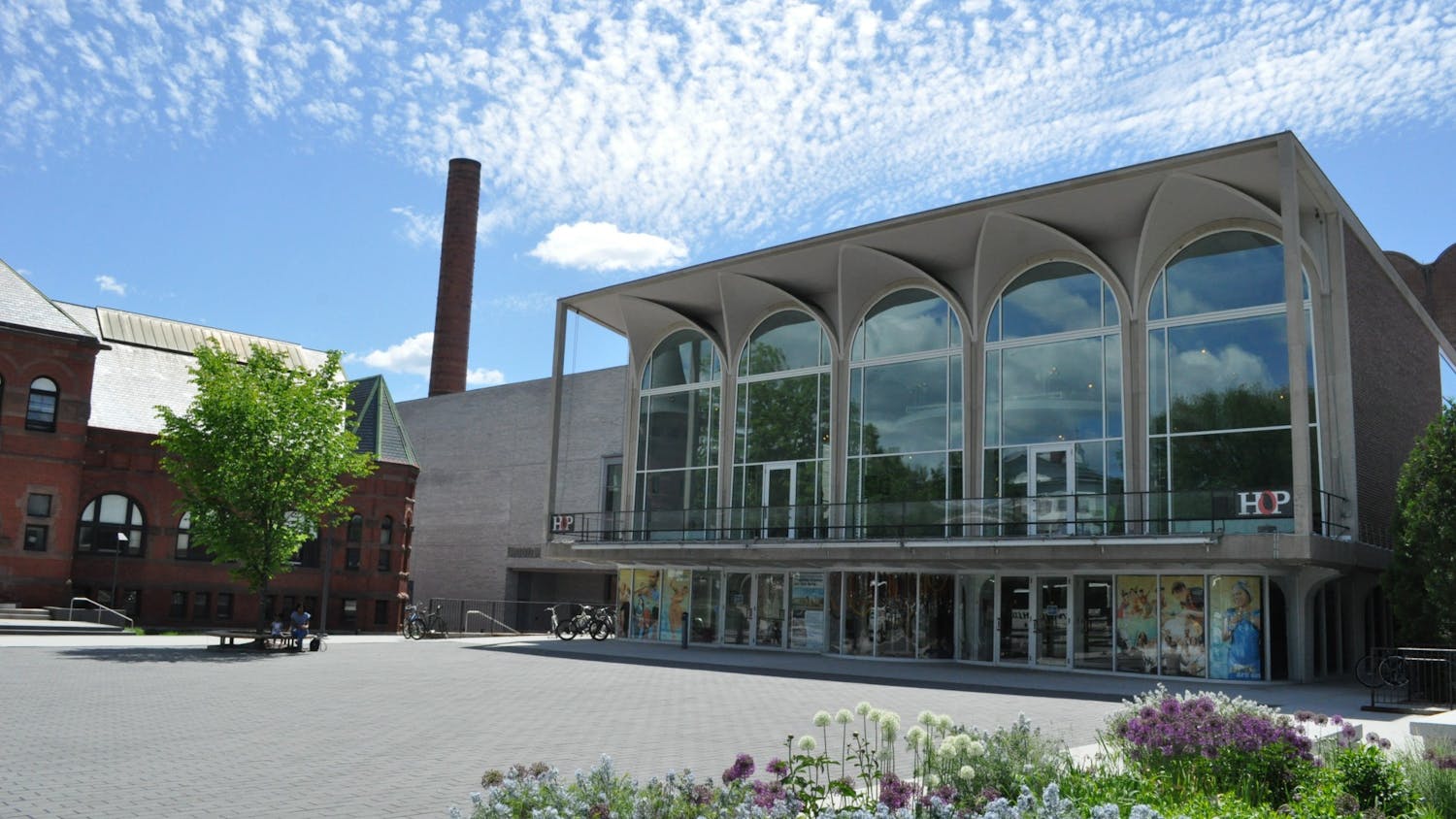"Inviting these artists to campus was a very forward-looking gesture," Miller said. "It was Darmouth's way of showing commitment and care for integrating [Native Americans] back into the community."
The exhibit, which is on display until March 11, 2012, offers multiple voices and perspectives through the works selected by three guest curators artists George Horse Capture, Joe Horse Capture and Joseph Sanchez who each brought a critical eye in collecting pieces for the display.
"What makes the Hood Museum collection interesting is its openness," Joe Horse Capture said. "You have the ability to work with Native American students to incorporate their perspective on the art."
"Native American Art at Dartmouth" is organized by geographical region, which allows for works from different time periods and thematic approaches to coexist in the same gallery room. Karen Miller, the head curator of the exhibit, said that contemporary and historical pieces are mixed together in order to demonstrate that Native American heritage is a living culture and is part of a continuum.
"Together, old and new art forms comprise an ancestry of experience' that is, an expression of how Native people see, understand and represent their families, their homes and the world around them," museum curators wrote on a placard in the exhibit.
The exhibit features paintings, drawings, sculptures, pottery, baskets, beadwork, clothing and personal accessories.
One of the most eye-catching pieces in the exhibit is Scholder's 1973 painting of a Native American, "Dartmouth Portrait #17." Painted in simple, gestural brushstrokes with heavy shadowing, Scholder casts a Native American against a bold, Dartmouth green background. The oppositions are confusing and the shadows make it unclear whether the Indian is strong or struggling.
"His face is in shadow so you can't read his expression," Miller said. "The painting poses the question, who will the Dartmouth Indian' be?"
Using 10 different video screens, the show also incorporates the voices of both past and present Native American Dartmouth students. In the Harrington Gallery room where art by Mateo Romero is featured, Kayla Gebeck '12, a Red Lake Anishinaabe and current co-president of Native Americans at Dartmouth, says in one of the videos that "the abilities to dance and do beadwork and make clothes are gifts. Dance is about healing, the power women have and the strength they have."
Feminist themes permeate the works in the exhibition by highlighting women's strengths, including their artistic talents. Harry Fonseca, for example, examines ideas about Native American women in his paintings that hang in the exhibit.
"Fonseca is confronting the stereotypes about Native people, and Native women in particular," Miller said.
Fonseca's garish painting of a female coyote, for example, utilizes several symbols of womanhood to send a message about female empowerment.
"With her red lipstick, high-heeled shoes and sequins, she is a potent symbol of the survival and adaptability of Native women in a judgmental colonial society," Sanchez wrote in the placard explaining the piece.
The painting "Drunken Indian in Car," by Scholder, is displayed in the same room. Like Fonseca's, the piece seeks to challenge stereotypes of Native identity.
"Scholder is saying, we are not the people you think we are," Miller said. "[Native Americans] use their art to reclaim their identities."
In the years following former College President John George Kemeny's 1970 announcement of his commitment to educating Native Americans, Dartmouth's arts community asserted its commitment to Native American art by inviting four prominent Native American artists to work at the College as artists-in-residence Scholder, Houser, Cannon and Haozous.
"Native American Art at Dartmouth" is the last of a series of four exhibitions celebrating the Hood's unique art collection. The first exhibition, shown in 2007, featured the Hood's American art collection. The second exhibition, "European Art at Dartmouth" ran from 2008 to 2009 and the third, "Modern and Contemporary Art at Dartmouth," was on display from 2009 to 2010.




